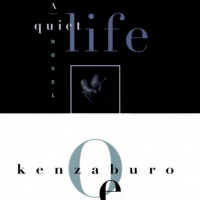With Kenzaburo Oe's latest novel, "Death by Water," on the longlist of the Man Booker International Prize this year, the Nobel laureate's work is again receiving the global attention it richly deserves.
A Quiet Life, by Kenzaburo Oe, Translated by Kunioki Yanagishita and William Wetherall.
256 pages
Grove Press, Fiction.
"A Quiet Life," first published in Japanese in 1990, retreads many of the themes and tropes that have defined Oe's oeuvre. There is the famous novelist, his brain-damaged son with a genius for music, and the honest, often brutal depiction of the darker side of Japanese life. Where "A Quiet Life" differs is in Oe's choice of narrator.
Twenty-year-old Ma-chan is left in charge of her two brothers when her father takes up a visiting professorship at an American university and her mother goes with him. The novel is presented as a diary in which she tries to make sense of an entirely new family dynamic. Essentially plotless and incorporating numerous digressions, the narrative is shaped by the care regime of her disabled elder brother, nicknamed Eeyore.
"A Quiet Life," opened new pathways in Oe's fiction. By absenting himself from his own world, he allows the center of gravity to shift. Ma-chan is fascinating — curious, thoughtful and tender in a way that Oe's narrators rarely are. The title is apt: "A Quiet Life" is more whimsical and lacks much of the existential angst that saturates his other novels.
Read archived reviews of Japanese classics at jtimes.jp/essential.



















With your current subscription plan you can comment on stories. However, before writing your first comment, please create a display name in the Profile section of your subscriber account page.